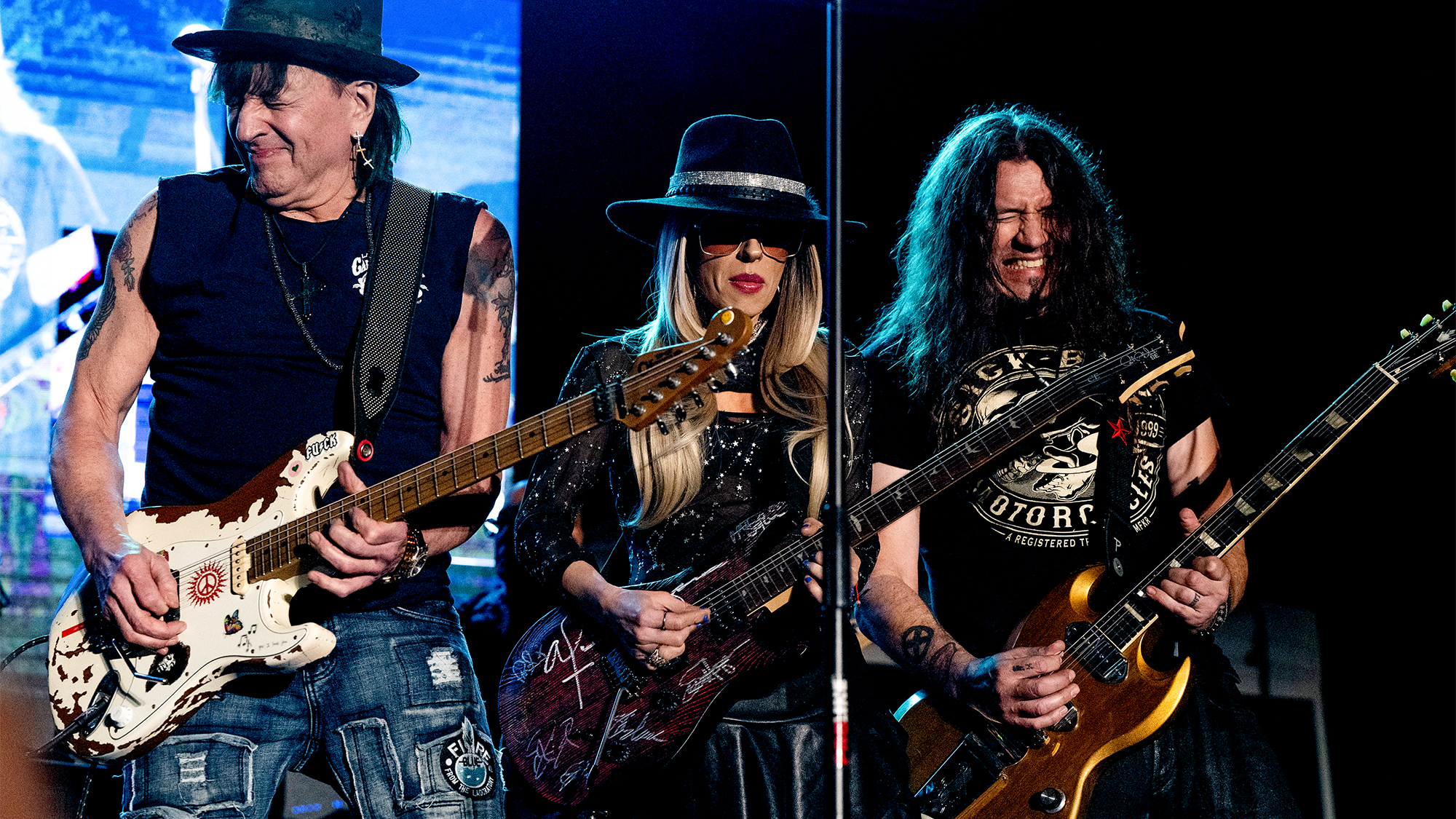"They're among some of the most versatile electrics ever made." Gibson's ES-345 struck a middle ground between the 335 and 355. It remains an underrated gem worth your time
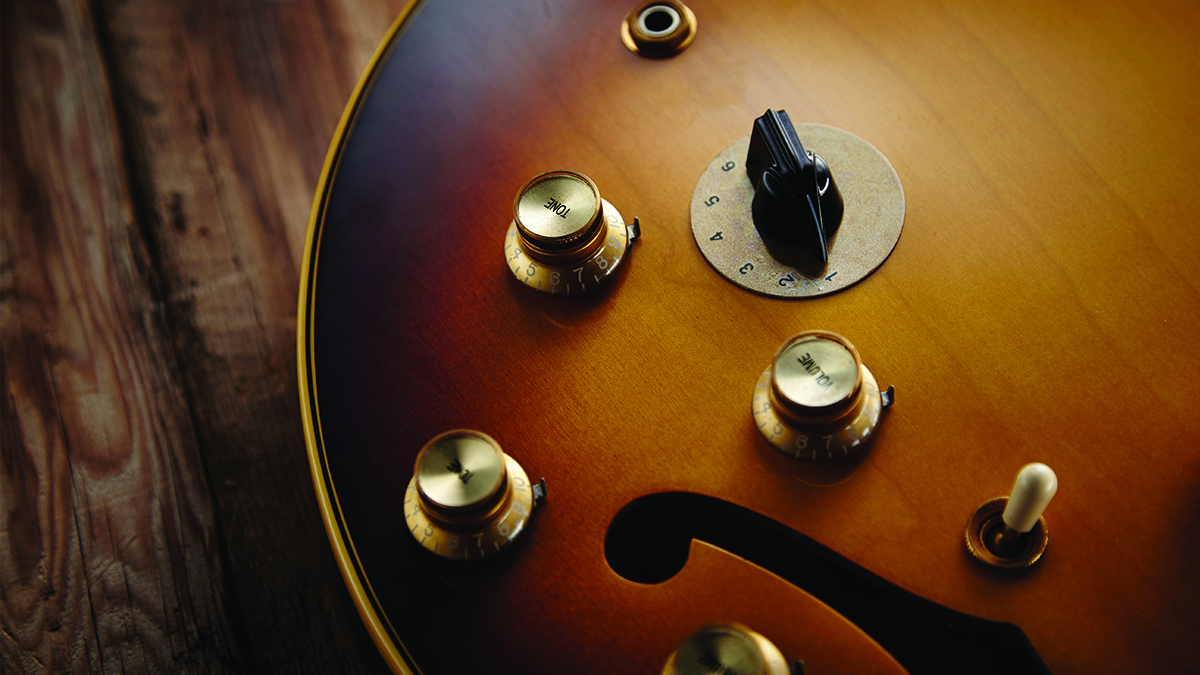
In the late 1950s, Gibson was in the last throes of trying to make its flagship Les Paul solidbody electric guitar fly in a skeptical market. Adding a luscious sunburst finish in 1958 to the humbucking pickups that arrived in ’57 hadn’t quite done it, even if those same ingredients would in future decades make it one of the most desirable vintage guitars of all time.
But the company must have felt confident about the semihollow archtop
it introduced in ’58. The ES-335 wasn’t allowed to linger on its own for long before it was joined by not one but two more-deluxe variations on the theme: the top-of-the-line ES-355, introduced later in 1958, and the ES-345, introduced in 1959, which sat right between the “3” and the “5” in features and adornments.
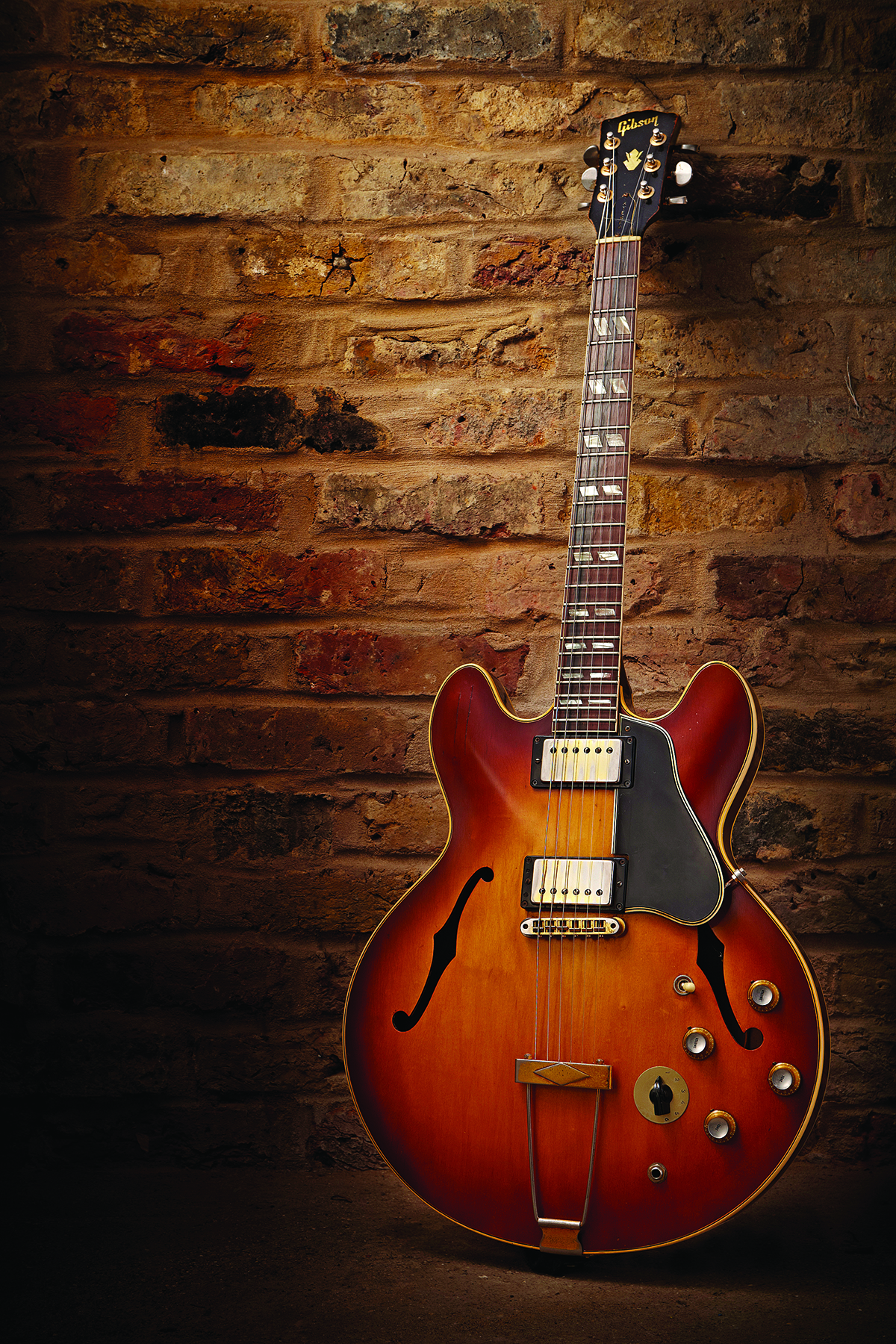
Initially called the ES-345T (for “Thinline”) and later the ES-345TD for “Thinline, Dual pickup ,” it had the same basic construction as the ES-335 and ES-355, made with a semihollow body built from laminated maple top, back and sides, and a solid-maple block down the center. To this was glued a mahogany neck with a rosewood fingerboard that was less fancy than the ES-355’s ebony with blocks, but its split-parallelogram inlays were still dressier than the ES-335’s rosewood with dot markers, and, later, small blocks.
Further elegance was found in the ES-345’s four-ply top binding and gold-plated hardware, while everything else was virtually identical to the appointments of its less-expensive sibling. The main exception was the deluxe wiring loom with six-position Varitone switch and stereo output, features that it shared with the ES-355. This configuration sent each pickup to different legs of the included “Y” cord for routing to individual amps or a single stereo combo, like Gibson’s own GA-79T.
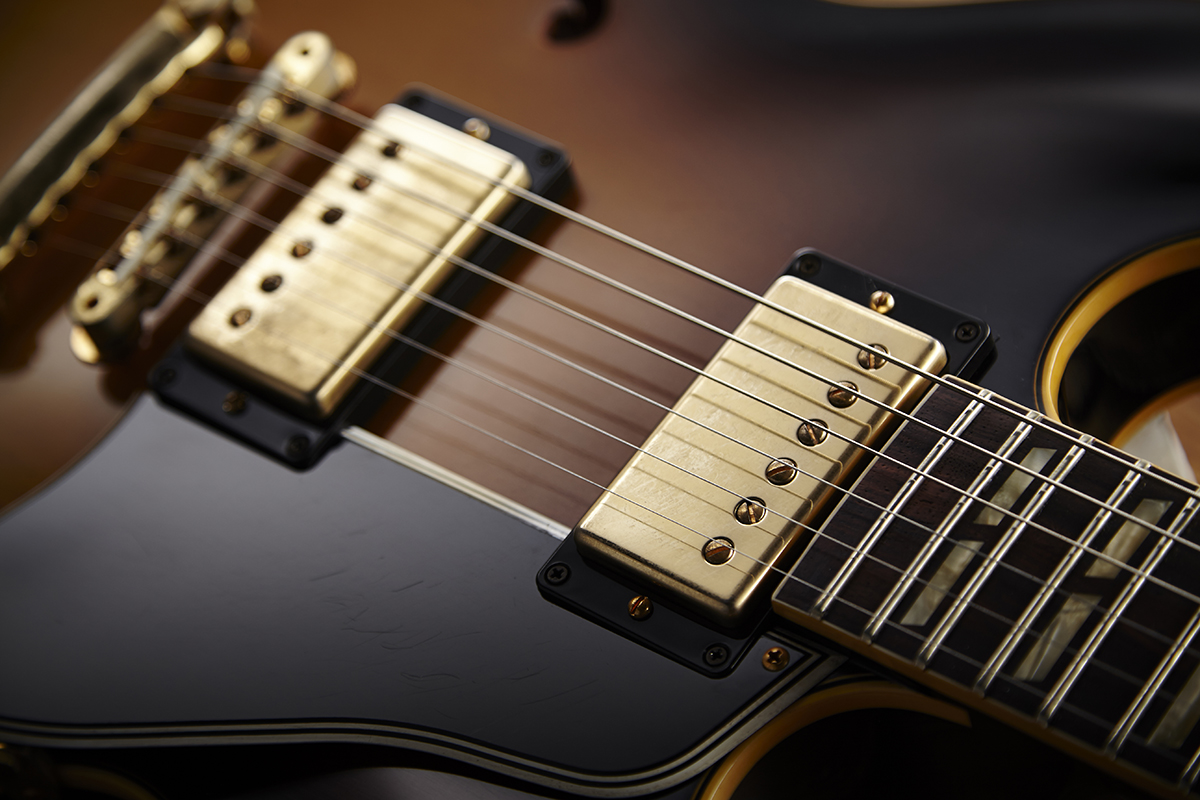
For many players, the ES-345 hit the sweet spot between form and function, offering a little more glam than the ES-335 with the same easy playability and tonal versatility. Notable among those who have taken the middle ground are B.B. King, Elvin Bishop, Freddie King, George Harrison, Bob Weir, Steve Howe, Keith Richards, Joe Bonamassa, Jorma Kaukonen and several others. Often noted, too, is the fictional character Marty McFly from the movie Back to the Future, although the scene in which he duckwalks across the prom stage wielding a cherry ES-345 was set in 1955, four years before the model came along.
Despite its elevated features, however, the ES-345 has taken a back seat to the ES-335 in the collectability stakes, as has the ES-355, simply because their feature sets were just too ambitious. The standard-edition ES-345’s stereo output is a feature that many guitarists simply don’t care for, and many could do without the Varitone switch as well. The “stereo” features touted by some guitar and amp makers in the late ’50s and early ’60s never took off with players.
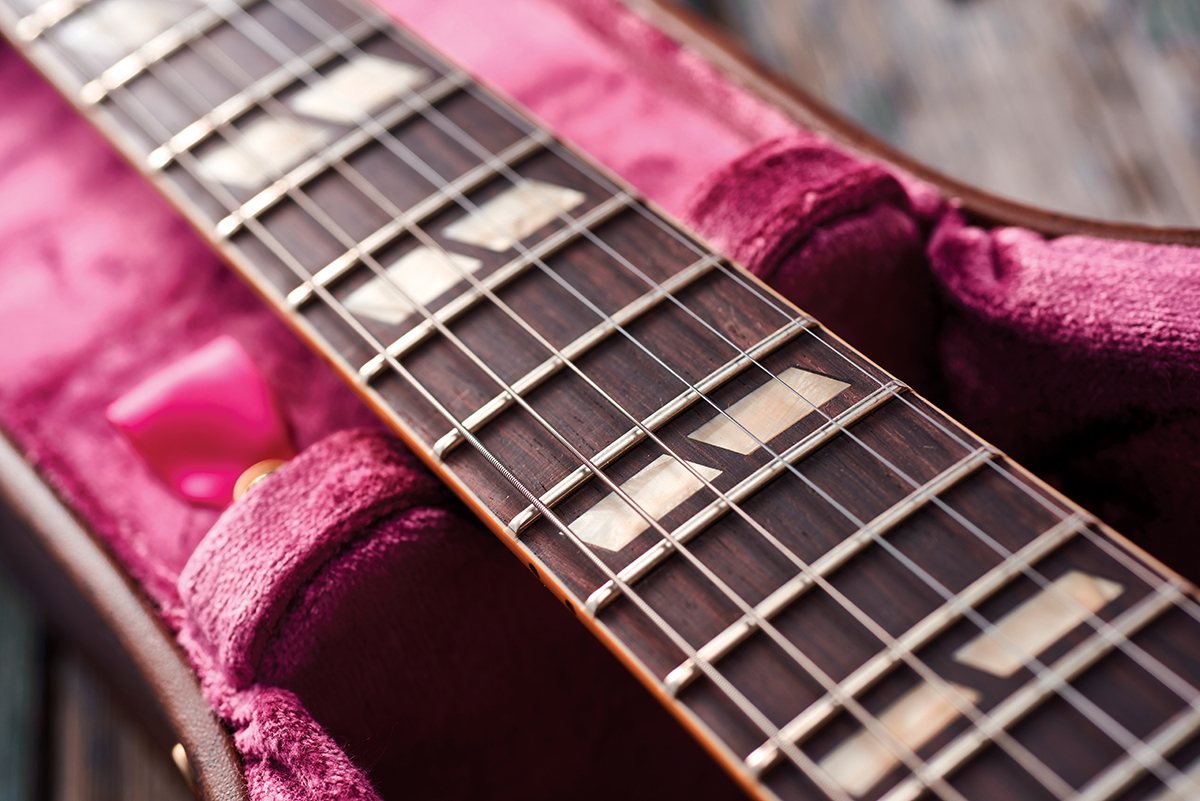
While it’s interesting to try out a stereo ES-345 today, many players through the years have converted their examples to mono to simplify their use. For one thing, the mono mod makes them easier to play with a standard cord and just a single traditional mono guitar amp. For another, the further simple modification of flipping the magnet in the neck pickup 180 degrees — reversing an alteration at the factory that created an out-of-phase middle position for a more dramatic stereo sound — restores an ES-345 to the in-phase sound when both pickups are engaged in mono, something the majority of guitar players prefer.
All the latest guitar news, interviews, lessons, reviews, deals and more, direct to your inbox!
The Varitone switch itself accesses five different tone settings produced by sending the signal through an array of capacitors and a large choke, plus bypass. Many players feel that even the bypass setting sucks some tone from the signal, and most yank out this feature while undertaking a mono conversion (which itself is often easiest done by installing an entirely new control harness). Extracting not only the Varitone switch but also the bulky, heavy choke that enables its function removes around a full pound of weight from the guitar, which many ES-345 players find beneficial as well.
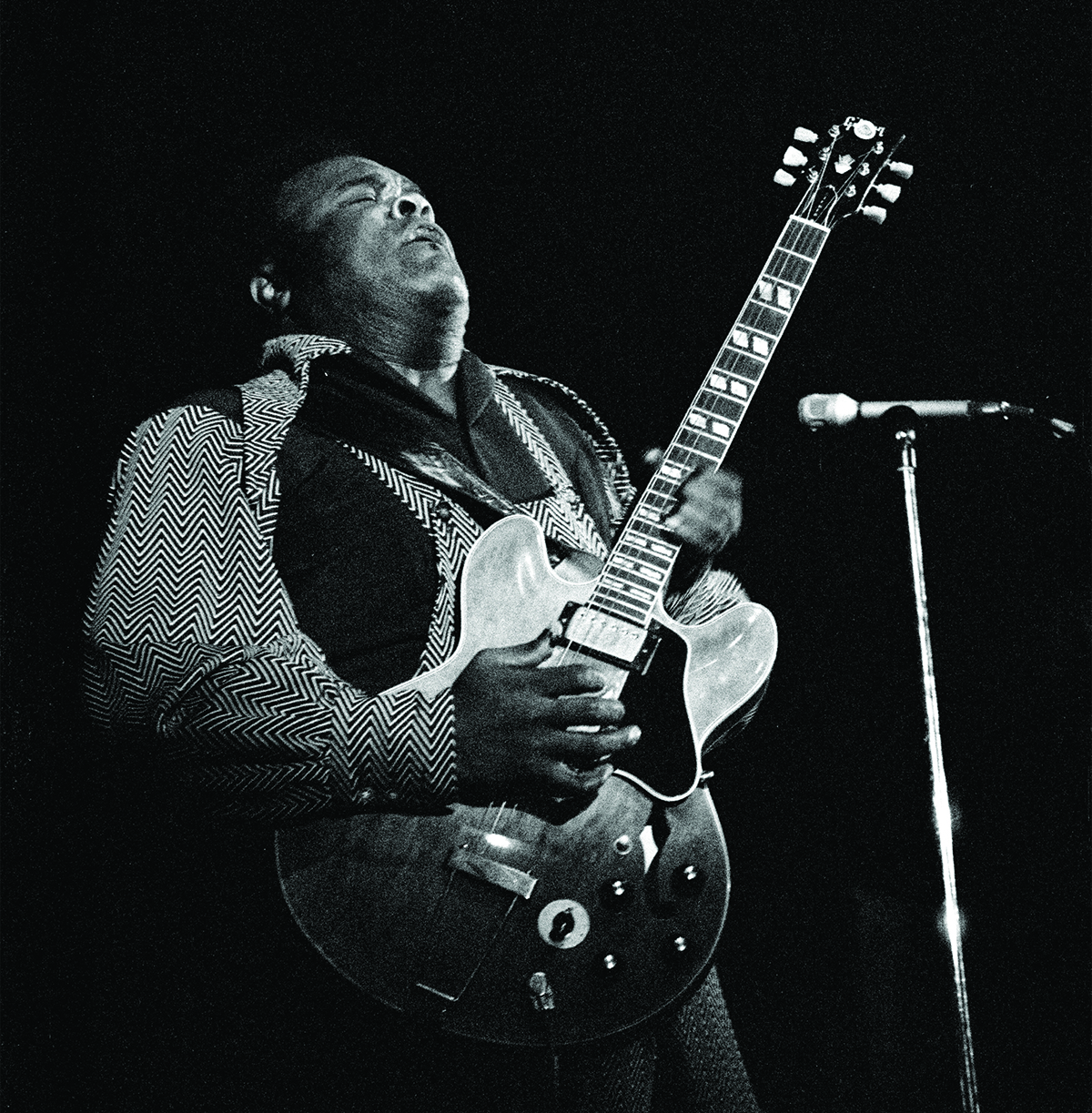
The majority of ES-345s produced in its first two years of existence carried Bigsby vibrato tailpieces, with other “hard-tail” versions given stopbar tailpieces. Around 1961, Gibson introduced its new “sideways” vibrola to the ES-345 and ES-355, as well as the new SG-bodied Les Paul Standard and Custom. These oddly configured devices produced a dip in pitch when the handle was pulled sideways. The function never became popular with players, although with their elaborate “tailfin” covers they arguably look pretty cool on the guitars that carry them. Gibson got the message, and ES-345s of the next few years wore either a Bigsby or a Gibson vibrato (a.k.a Maestro vibrola, in some literature). In the hardtail variant, from around 1965, the stopbar was replaced with a trapeze tailpiece like that used on fully hollow archtop electrics.
In 1962, Gibson began phasing out the hallowed PAF humbuckers it had used in the late ’50s and early ’60s and equipped these guitars with the Patent Number pickups that followed, so-called because the pickup design had finally earned its patent. Gibson changed the decal accordingly, although the number printed on it was inexplicably that for the patent awarded to one of the company’s bridge designs.
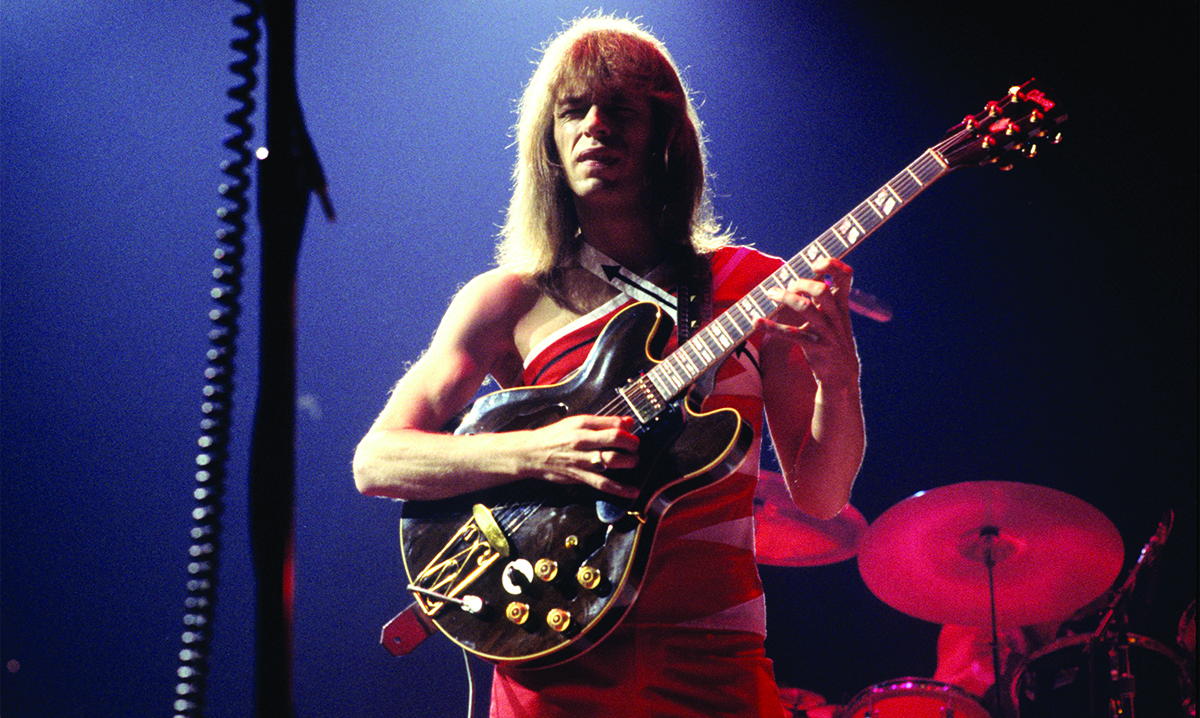
The Patent Number pickups used from late ’62 well into ’65 or so weren’t demonstrably different than the last iteration of PAFs, however, and still delivered classic vintage Gibson humbucker tone in a good semihollow guitar. Otherwise, ES-345s, along with their siblings, are known to be among some of the most versatile electrics ever made, excelling at blues, rock and roll, jazz, country, prog and even heavy rock. The bonus of elegantly elevated looks doesn’t hurt much either.
Dave Hunter is a writer and consulting editor for Guitar Player magazine. His prolific output as author includes Fender 75 Years, The Guitar Amp Handbook, The British Amp Invasion, Ultimate Star Guitars, Guitar Effects Pedals, The Guitar Pickup Handbook, The Fender Telecaster and several other titles. Hunter is a former editor of The Guitar Magazine (UK), and a contributor to Vintage Guitar, Premier Guitar, The Connoisseur and other publications. A contributing essayist to the United States Library of Congress National Recording Preservation Board’s Permanent Archive, he lives in Kittery, ME, with his wife and their two children and fronts the bands A Different Engine and The Stereo Field.

